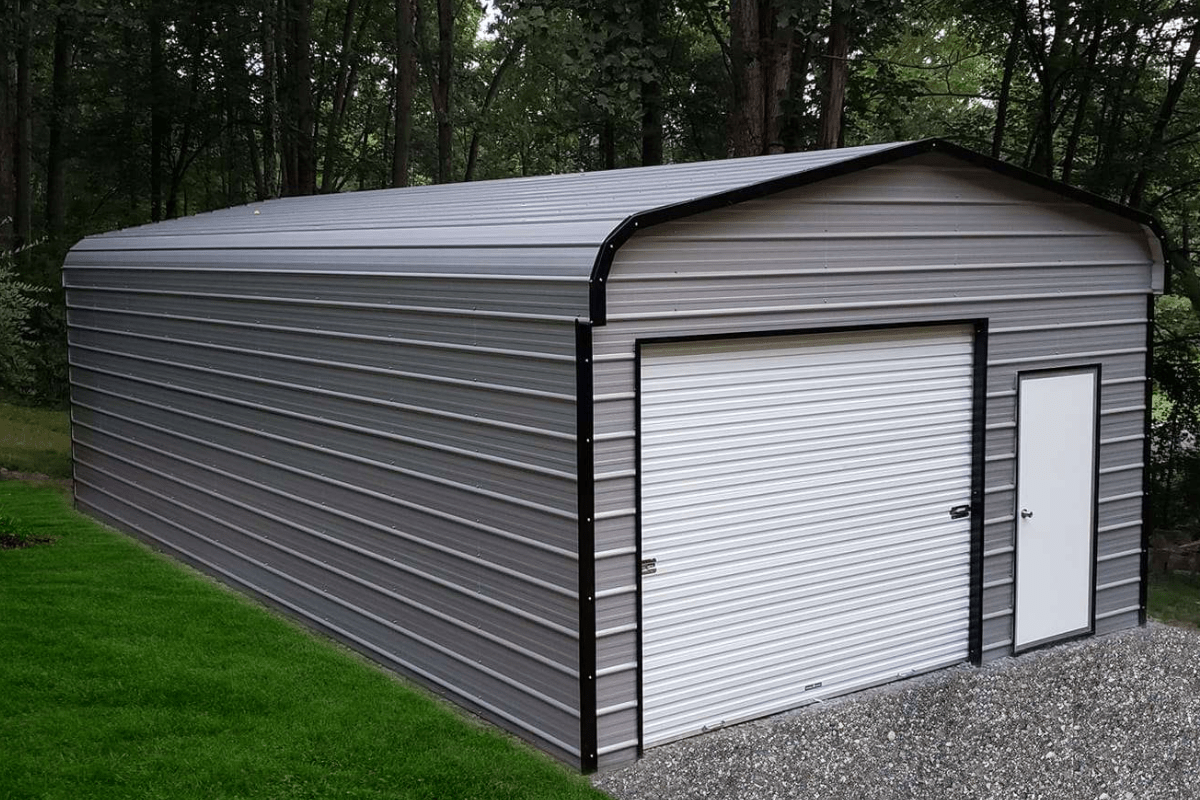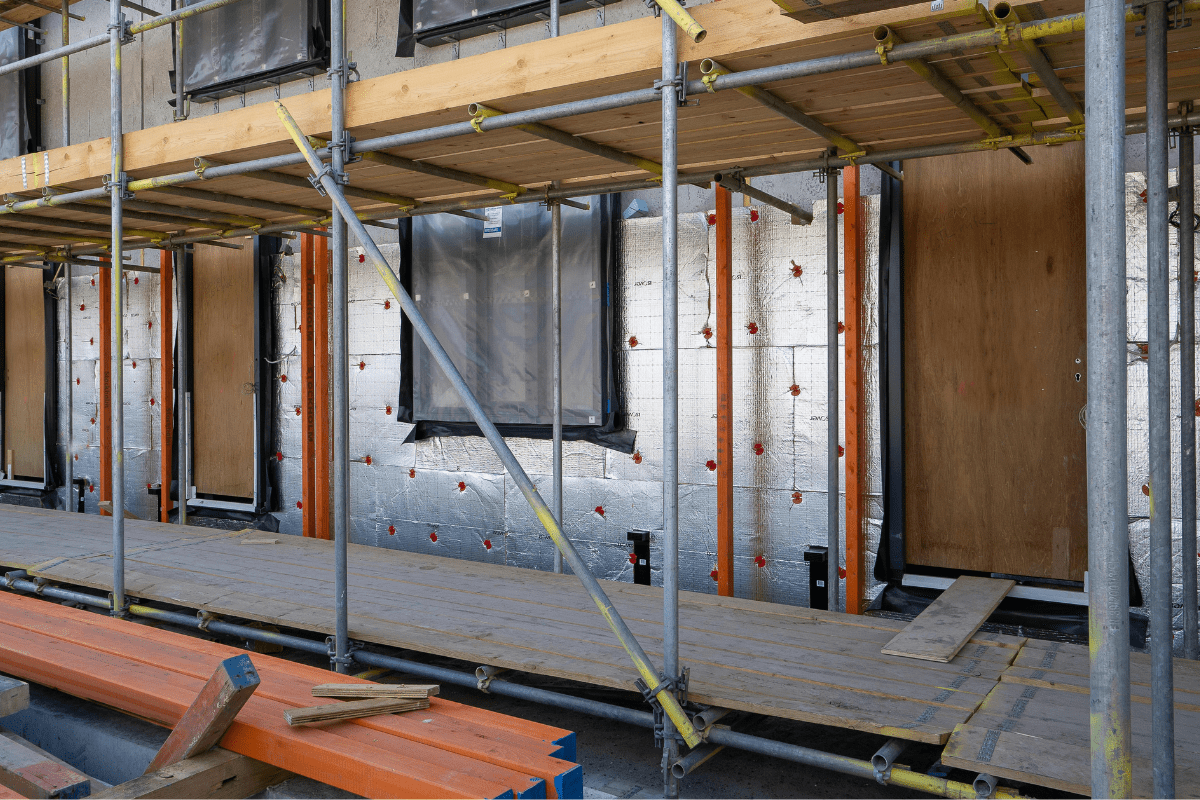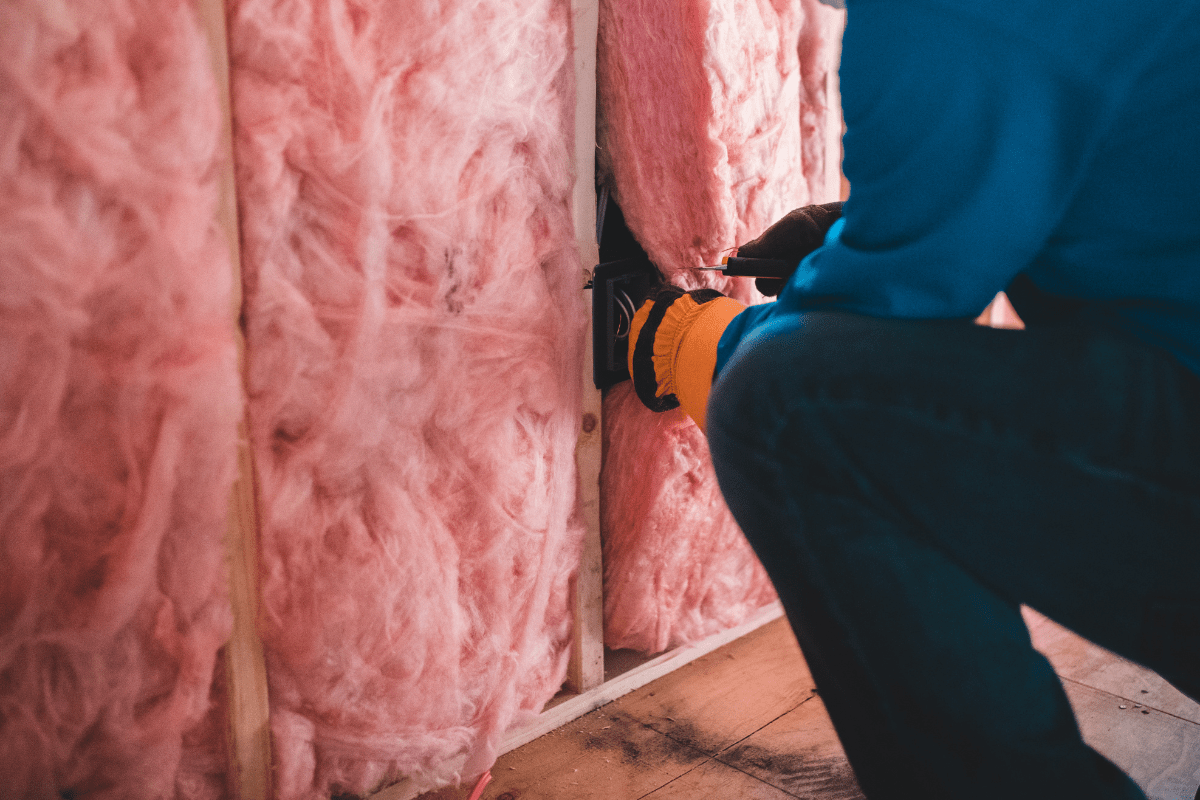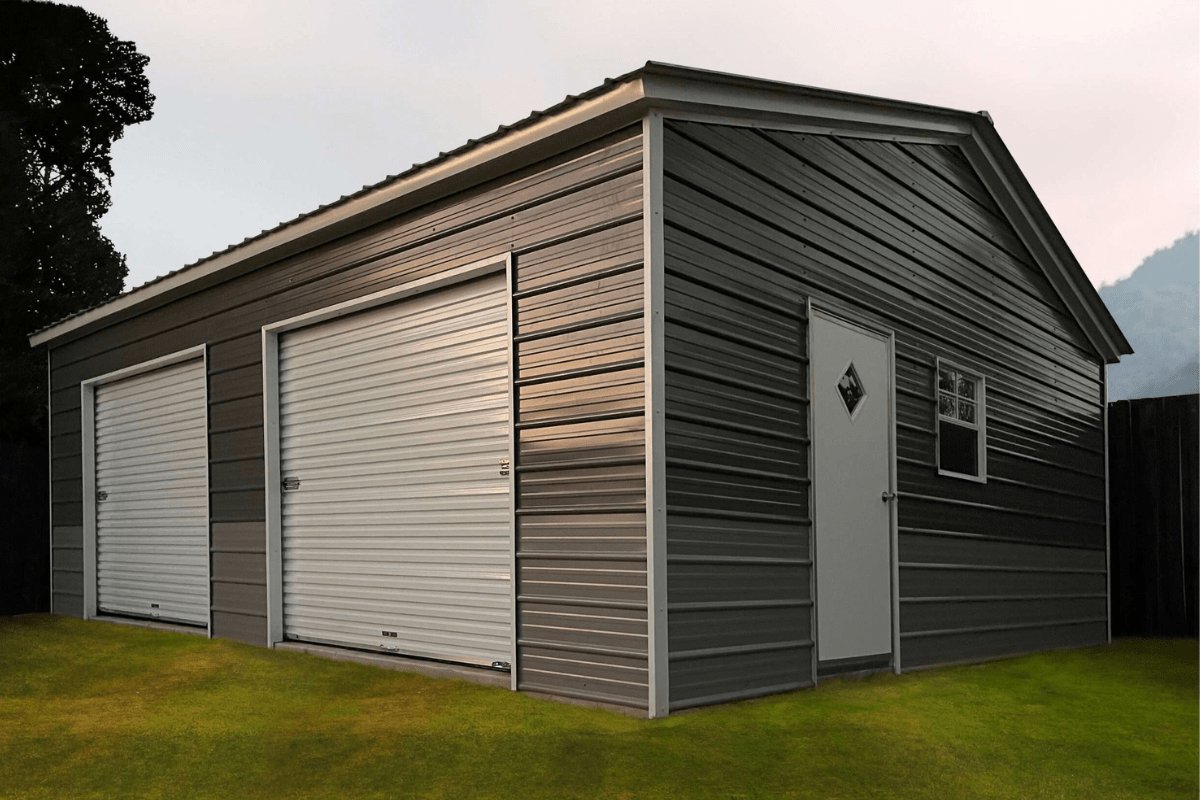If you’re wondering whether or not insulation is necessary for your metal garage, the short answer is yes. Insulating your metal building can make a world of difference in terms of energy efficiency, comfort, and long-term durability. Whether you’re in the process of designing a new metal structure or upgrading an existing one, insulation is something you’ll definitely want to consider. In this article, we’ll walk you through the various insulation options available and help you figure out the most cost-effective solution for your needs.
At Prestige Steel Structures, we believe in providing clear and practical advice on the best ways to insulate your metal carport or building. With the right insulation, you’ll get better temperature control, reduced energy costs, and increased protection against issues like condensation and moisture. Let’s dive into why insulation is essential for your metal structure and how to choose the best option.

Why Insulate a Metal Building?
Metal buildings are well-known for their sturdiness and weather resistance, but that doesn’t mean they’re immune to temperature fluctuations. Without proper insulation, these structures can face challenges like excess heat, cold, or even condensation that can affect the interior. That’s where insulation comes into play.
Now that we understand why insulation is important, let’s take a closer look at the specific benefits it offers for your metal building. Insulation not only keeps your space comfortable but can also improve air quality and reduce energy costs.
Boosting Energy Efficiency
A major reason to insulate your metal building is to improve energy efficiency. Metal is a great conductor, meaning it easily transfers heat and cold. This can cause indoor temperatures to fluctuate, forcing HVAC systems to work harder to maintain comfort. Insulating your metal carport or garage helps keep the interior temperatures stable, ultimately lowering your energy bills while reducing strain on your heating and cooling systems.
Enhancing Indoor Air Quality
Another benefit of insulation is its ability to improve indoor air quality. Proper insulation can prevent moisture buildup, which is key in avoiding mold and mildew growth. This is especially important in spaces where humidity levels fluctuate, as moisture buildup can lead to respiratory problems like asthma and allergies. Insulating your metal building helps keep humidity in check, creating a healthier and more comfortable environment inside.
Better Temperature Control
If you live in an area with extreme temperatures, insulation is essential for maintaining a comfortable space year-round. In warmer climates, it keeps the heat out, while in colder regions, it retains heat inside. Whether you’re using your metal building as a workshop, storage space, or something else, insulating it ensures that the temperature remains stable, making it a more versatile space no matter the season.
Increasing Your Metal Building’s Value
Did you know that insulating your metal building can actually increase its resale value? A well-insulated building is often more appealing to potential buyers because it signals energy efficiency, comfort, and durability. So, by investing in insulation now, you’re not only improving your space but potentially getting a better return on investment later.

Understanding Metal Building Insulation
Insulating a metal building involves applying materials to the walls, roof, and floors to help regulate temperature and moisture. Because metal is a highly conductive material, insulation plays a vital role in preventing unwanted heat transfer, condensation, and other issues.
Benefits of Insulating Your Metal Building
When you work with a knowledgeable contractor, you’ll see the many perks of adding insulation to your metal structure. Here are some key benefits:
- Improved Energy Efficiency – Insulation keeps your building more energy-efficient by regulating temperature better.
- Temperature Control – Helps maintain a more comfortable and consistent indoor climate.
- Reduced Condensation – Prevents mold and mildew growth by reducing moisture buildup.
- Moisture Control – Protects your building from water damage, keeping the structure safe.
- Enhanced Air Quality – Insulation helps control humidity, which leads to better air quality.
- Noise Reduction – Reduces noise transmission, which can be especially useful in busy areas.
- Increased Durability – Keeps your building in top shape for longer.
- Higher Resale Value – An insulated building can fetch a higher price if you ever decide to sell.
- Faster Construction Time – Insulation can streamline the construction process by making your space ready for use sooner.
What Should I Consider for Metal Building Insulation?
Choosing the right insulation for your metal structure involves more than just picking a material. There are several important factors to weigh when deciding what’s best for your metal garage or carport.
Before jumping into specific types of insulation, let’s break down the factors that should influence your decision. These considerations can help ensure that your building’s insulation will meet your energy, comfort, and budget needs.
- Climate: Your location plays a major role in the insulation decision. Warmer climates may require more heat-resistant insulation, while colder areas will benefit from materials that retain warmth.
- Building Use: The way you plan to use the building affects the type of insulation you need. For example, a storage unit might have different insulation needs than a commercial workshop or office.
- Building Features: The design of your building, including its shape, size, and roof type, will influence the insulation approach. More complex structures may require specialized solutions.
- Energy Efficiency: Always look for materials that offer good thermal resistance, which will help lower your energy consumption and bills over time.
- Moisture Control: Choose insulation materials that help prevent moisture buildup and protect your building from rust and mold.
- Fire Safety: Make sure your insulation is fire-resistant and meets local fire codes to ensure the safety of the building.
- Budget: While cost is always a factor, remember that insulating your metal building is an investment that will pay off through energy savings and increased comfort.
- Maintenance: Go for insulation that’s easy to maintain and repair if needed.
- Installation Method: Consider how the insulation will be installed and whether the process fits your construction timeline and building design.
- Environmental Impact: Opt for eco-friendly materials that are energy-efficient and recyclable to minimize your environmental footprint.
By thinking through these factors and working with an experienced contractor, you’ll be able to find the perfect insulation for your metal building—one that fits your needs, budget, and goals for energy efficiency and comfort.
Types of Metal Building Roof Insulation
Now that we’ve covered the key factors for insulation, let’s take a deeper look at the types of materials available for insulating your metal roof. The right choice depends on your climate, budget, and building use.
Batt and Roll Insulation
For those seeking a cost-effective and easy-to-install option, batt and roll insulation is a popular choice. This material, typically made from fiberglass or mineral wool, is pre-cut and fits snugly between framing members. While it provides good thermal resistance, it’s less effective at controlling moisture, so it’s not the best for buildings in humid areas.
Spray Foam Insulation
Spray foam is a high-performance option that forms an airtight seal as it expands upon application. This material provides excellent thermal resistance, air sealing, and moisture control. It’s particularly useful in areas that experience extreme temperatures. However, spray foam insulation can be pricier than others and requires professional installation.
Rigid Board Insulation
Rigid board insulation is known for its durability and thermal performance. Made from foam or fiberboard, it can be installed on both the interior and exterior of the building. Rigid board insulation offers excellent moisture control and air sealing, but it tends to be more expensive and requires professional installation.
Reflective Foil Insulation
Reflective foil is an affordable and easy-to-install option, especially for buildings located in warmer climates. This material reflects heat away from the building, keeping the interior cooler. It’s especially effective when paired with other insulation types but isn’t as effective in colder climates due to its lack of thermal resistance.
Loose-fill Insulation
Loose-fill insulation consists of small fibers or pellets that are blown into the gaps between framing members. It’s a cost-effective and flexible solution for irregular spaces. However, it can shift over time and might not be suitable for locations with high air movement.
Insulated Metal Panels (IMPs)
Insulated metal panels (IMPs) are a more integrated solution, offering a combination of insulation with metal facings on both sides. This material provides excellent thermal resistance and air sealing. Though more expensive than other options, IMPs are durable, low-maintenance, and offer a sleek, modern appearance.
Fabric Liner Systems
If you’re looking for something that combines insulation with an aesthetic finish, fabric liner systems might be the way to go. These systems consist of a layer of insulation covered by a durable fabric, typically vinyl-coated polyester, that’s stretched over the framing. It’s an excellent option for buildings where both function and appearance are important, such as commercial spaces or showrooms.
Sag and Bag Two-Layer System
This two-layer system involves an unfaced layer of fiberglass insulation installed between framing members, topped with a faced fiberglass layer that serves as a vapor barrier. This system helps reduce heat transfer and moisture buildup but requires precise installation, making it a good choice for those working with experienced contractors.
What Are R-Value, U-Value, and Perm Ratings for Metal Buildings?
When considering insulation for your metal building, it’s important to understand key ratings that measure insulation’s performance. These ratings—R-value, U-value, and Perm ratings—will help guide you in choosing the most effective material for your building.
Before making your final decision, it’s essential to understand how these performance metrics affect your building’s insulation. Let’s dive into what each of these terms means and how they can guide your insulation choice.
R-Value: Thermal Resistance
R-value measures how well an insulation material resists heat flow. A higher R-value means the material is better at preventing heat from entering or escaping the building. For example, spray foam insulation typically offers an R-value of 6.5 per inch of thickness, making it a strong choice for both temperature control and energy efficiency. Fiberglass, on the other hand, provides an R-value of around 3.1 per inch.
U-Value: Heat Transfer Efficiency
U-value is essentially the opposite of R-value. It measures how much heat is transferred through a material or building system. A lower U-value indicates better heat retention, which is ideal for improving energy efficiency in your metal building. U-value takes into account all aspects of a building’s thermal performance, including windows and doors, making it a comprehensive measurement.
Perm Rating: Moisture Control
Perm ratings indicate how well a material allows water vapor to pass through. This is critical for metal buildings, especially in humid climates. Insulation materials with a higher Perm rating allow moisture to escape, reducing the risk of mold and mildew growth. This helps maintain good indoor air quality and protects the structural integrity of the building.

What is the Most Cost-Effective Way to Insulate a Metal Building?
When you’re planning to insulate your metal building, one of the first things to consider is how to do it without breaking the bank. The right insulation solution depends on your building’s size, your location’s climate, and your specific needs. That said, there are some budget-friendly options to consider that won’t sacrifice efficiency.
- Fiberglass Batt Insulation: This is one of the most common and affordable insulation options available. It’s widely accessible, relatively inexpensive, and easy to install. Fiberglass batt is a great option for smaller to mid-sized buildings that don’t face extreme temperature shifts. However, it’s less ideal for areas with high moisture levels, as it doesn’t control humidity.
- Reflective Foil Insulation: For those in hotter climates, reflective foil insulation could be the most cost-effective solution. It works by reflecting radiant heat away from the building, keeping the interior cooler. This material is easy to install and affordable, though it doesn’t provide as much thermal resistance in colder climates.
- Loose-fill Insulation: If you’re looking for an option that fits irregularly shaped spaces, loose-fill insulation is a great choice. It’s inexpensive and can be blown into gaps to create a good thermal barrier. However, it may not be the best for buildings with high air movement, as it can shift over time.
While these options are cost-effective, the best choice will depend on your specific situation. To find the ideal insulation, it’s always smart to consult with a metal building insulation expert who can guide you based on your structure and goals.
Final Thoughts on Insulating Your Metal Garage
In conclusion, insulation is a crucial aspect of ensuring that your metal garage or building remains comfortable, energy-efficient, and durable. Whether you’re building a new structure or upgrading an existing one, investing in the right insulation can offer significant benefits in terms of temperature control, reduced energy costs, and long-term protection. By selecting the right type of insulation, considering factors like climate, budget, and intended use, you can ensure that your metal building will function optimally throughout the year.
Key Points:
- Insulating your metal garage improves energy efficiency and temperature control.
- Proper insulation can enhance indoor air quality and reduce moisture-related issues.
- A well-insulated building increases durability and resale value.
- The right insulation choice depends on your climate, budget, and intended use.
- Consult a professional to determine the best insulation solution for your metal structure.
Frequently Asked Questions (FAQs)
What is the best insulation for a metal garage?
The best insulation for a metal garage depends on your climate and needs. Spray foam insulation is excellent for temperature control and moisture resistance, while fiberglass batt is more affordable and easy to install.
Can I insulate my metal garage myself?
Yes, you can insulate your metal garage yourself, especially if you choose easier options like batt insulation or reflective foil. However, for more complex materials like spray foam, it’s best to hire a professional.
Is reflective foil insulation effective in colder climates?
Reflective foil insulation is more effective in hot climates as it reflects radiant heat away from the building. In colder climates, it is less effective at maintaining warmth compared to other insulation materials like fiberglass or spray foam.
How can I prevent moisture buildup in my metal garage?
Using insulation with moisture control features, like spray foam or vapor barriers, can prevent condensation. Proper ventilation and a good roofing system also help manage moisture levels.
What is the best way to insulate a metal garage door?
The best way to insulate a metal garage door is by using foam board insulation or reflective foil, along with weather stripping around the edges to prevent heat loss and improve energy efficiency.
Does insulating my metal garage increase its value?
Yes, insulating your metal garage can increase its resale value by making it more energy-efficient, comfortable, and appealing to potential buyers. A well-insulated garage is seen as a durable, long-lasting investment.
Users Also Say
Is it worth insulating a metal building?
Ke*********n
Absolutely! Insulating a metal building is a must.
In the summer, these buildings turn into ovens, and in the winter, they feel like freezers. Insulation acts as a protective layer between the outdoor weather and your steel structure, keeping the inside temperature more stable.
Beyond just comfort, insulation helps prevent condensation from forming on bolts and screws, which can cause long-term damage to the building. It also saves you money on energy bills and even reduces noise inside.
So if you’re setting up a metal building, insulation is one of the smartest investments you can make..
He***********es
Roof insulation in a metal building is a game-changer because it not only saves you money but also extends the life of your structure. A properly insulated roof helps maintain comfortable living and working conditions.
Without it, condensation and moisture buildup can lead to structural issues, including rust, water damage, and in extreme cases, even roof failure… The right insulation helps with temperature control, lowers energy costs, reduces heat loss and heat gain, improves soundproofing, minimizes condensation, and strengthens the air barrier with different facing options.
If you want your metal building to last and stay comfortable, investing in quality insulation is a no-brainer.


